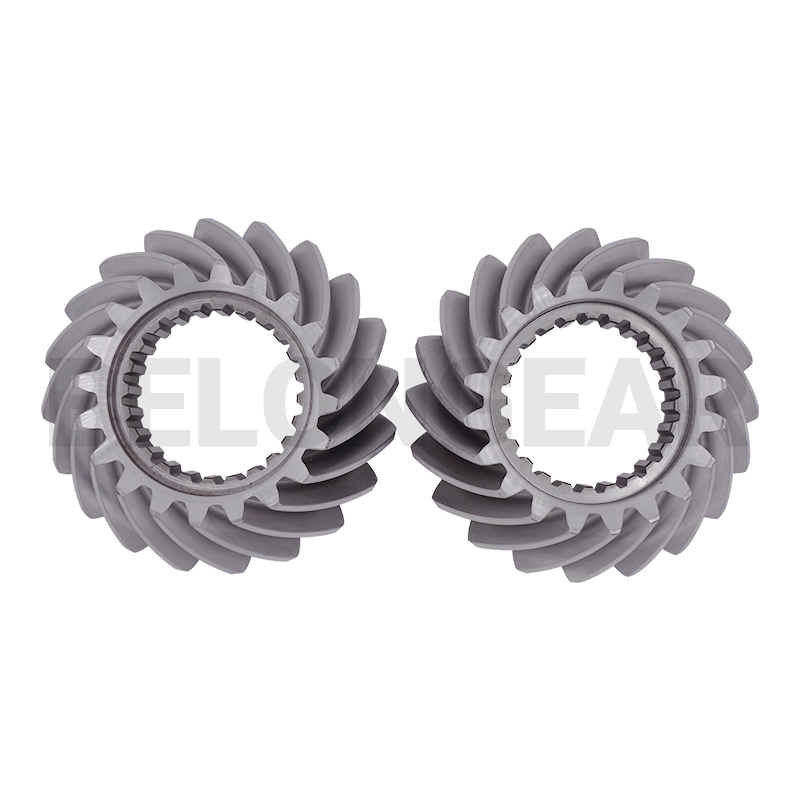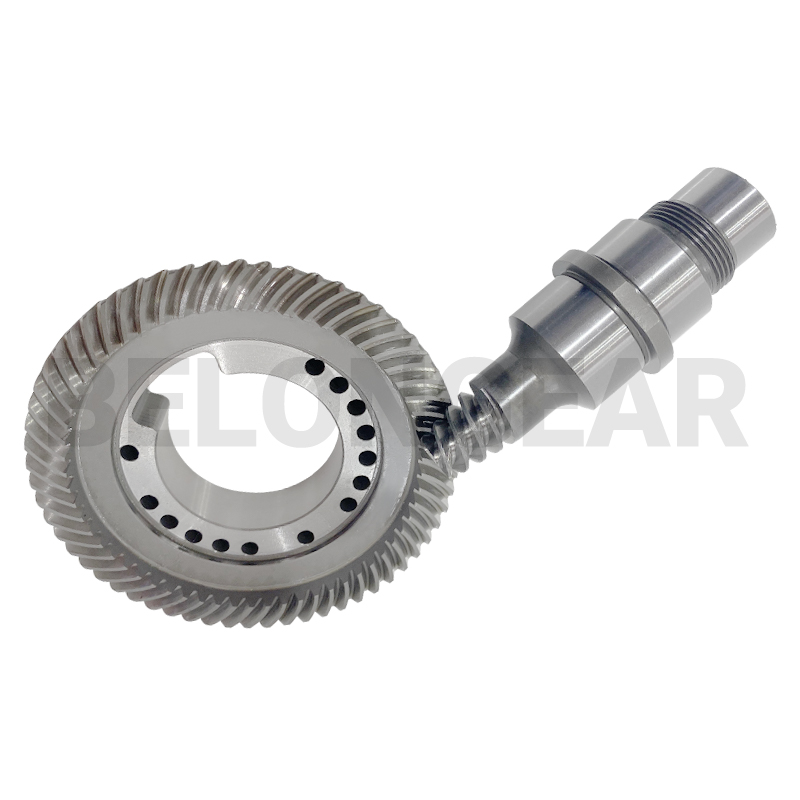What are Miter Gears and Bevel Gears?
Miter gears and bevel gears are types of mechanical gears designed to transmit power and change the direction of force between intersecting shafts. Both gears are cone-shaped, allowing them to mesh and operate at specific angles, but they serve different purposes due to their unique designs.
Miter Gears
Miter gears are a specific kind of bevel gear designed to operate at a 90-degree angle between shafts. They have an equal number of teeth, maintaining a 1:1 gear ratio, meaning there is no change in rotational speed between input and output shafts. Miter gears are best suited for applications that need a simple directional change without altering the speed or torque.

Advantages of Miter Gears
- Simple and Efficient: Miter gears are easy to design and use in applications where only a 90-degree directional change is needed.
- Low Maintenance: With fewer moving parts and a simpler design, they are easier to maintain.
- Cost-Effective: Manufacturing costs are typically lower, making them an economical choice for low-speed, low-load applications.
Disadvantages of Miter Gears
- Limited Applications: With a fixed 1:1 gear ratio, miter gears are not suitable for applications that require speed or torque adjustments.
- Restricted Angle: Miter gears can only operate at 90 degrees, limiting their flexibility.
- Lower Load Capacity: They are generally used in light-duty applications and are not ideal for heavy-load scenarios.
Bevel Gears
Bevel gears are more versatile, as they can transmit power between shafts at various angles, not limited to 90 degrees. By adjusting the number of teeth on each gear, bevel gears allow for changes in speed and torque, making them suitable for applications requiring high load capacities, such as in industrial machinery and automotive differentials.
Advantages of Bevel Gears
- Adjustable Gear Ratios: With a range of gear ratios available, bevel gears can increase or decrease speed and torque as needed.
- Flexible Angles: They can transmit power at angles other than 90 degrees, allowing for greater design flexibility.
- High Load Capacity: Bevel gears are built to handle more demanding loads, making them ideal for heavy-duty applications.
Disadvantages of Bevel Gears
- Complex Manufacturing: Their intricate design and need for precision make them more costly to manufacture.
- Higher Maintenance: Bevel gears require more frequent maintenance due to the greater stress on their teeth.
- Alignment Sensitivity: Bevel gears need precise alignment to function correctly, as misalignment can cause premature wear.
What is the difference between a bevel gear and miter gears?
Miter gears are a type of bevel gear, but they have some key differences:
Number of teeth
Miter gears have the same number of teeth on both mating gears, while bevel gears can have different numbers of teeth.
Speed
Miter gears can’t change speed, but bevel gears can.
Purpose
Miter gears are used to change the direction of power transmission, while bevel gears are used to transmit motion or change the direction of a shaft’s rotation.
Efficiency
Miter gears are highly efficient due to their 90° intersecting axes. Bevel gears can change mechanical advantage by increasing or decreasing the tooth ratio.
Types
Miter gears can be straight or spiral, while bevel gears can be straight or spiral.
Post time: Nov-14-2024





